

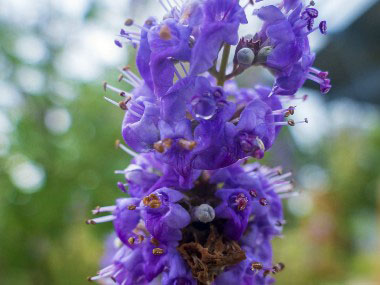
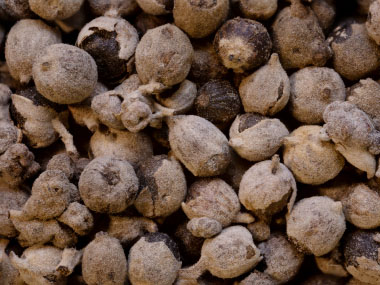
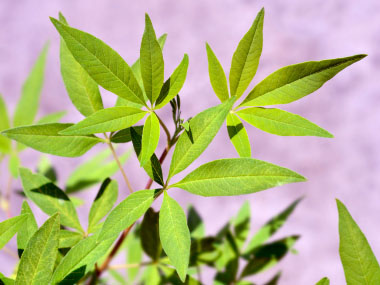
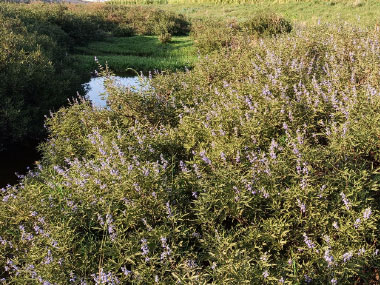
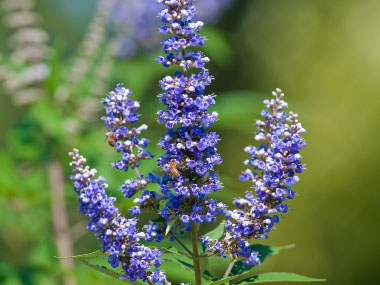

To support our efforts please browse our store (books with medicinal info, etc.).
The chaste tree is technically a shrub in the Verbenaceae family that is considered native to the Middle East and the Mediterranean. It was introduced to France by the Romans, then later by the crusaders on their return from the crusades. Vitex was the name used by the Roman naturalist, Pliny the Elder, and is derived from the Latin vieo, meaning to weave or to tie up, a reference to the use of this shrub in basketry.The botanical name agnus-castus, comes from agnos the Greek name and Latin castus, both meaning chaste. Chaste trees were introduced from Asia Minor by the Romans to the Mediterranean and then to the Atlantic coast. This shrub became widespread in France with the return of the crusaders. Apparently the chaste tree became very popular in the Middle Ages and was considered a very useful edible shrub. According to the University of Rochester Medical Center, chaste tree contains iridoids, flavonoids, progestins, and essential oils.
Trunk/Bark
It is typically multi-trunked.
Branches/Twigs
Branches typically droop and have thorns. Twigs are usually green.
Height
This shrub grows between 2.4 to just over 3 metres tall (8 to 10') and can spread to 1.5 to 2.4 metres (5 to 8') wide.
Leaves/Needles
Fragrant leaves are palmately compound with 5 or more leaflets. Leaflets are lanceolate; leaf venation is pinnate. Leaf blades measure about 5 to 10cm (2 to 4") long.
Flowers
Flowers grow as a spire, are violet, pale violet, and sometimes white. There are many tiny, fragrant flowers that occur on loose panicles measuring up to 30cm (12") long in mid to late summer.
Fruit
In autumn, the flowers become small, gray/brown seeds which, when crushed release a pungent but pleasant aroma and flavor.
Habitat
These trees are usually found in sandy, well-drained areas with plenty of moisture. They grow in full sun to partial shade. Although found in the wild, they are commonly used in landscaping. In addition to the MIddle East and Mediterranean area, the chaste tree grows throughout southern U.S.
Edible Parts
According to Aegean Edibles, the leaves, flowers, and berries may be consumed. They can be used as a tea, tincture, or syrup. The leaves, flowers, and seeds are aromatic with a spice-like scent similar to crushed sage. According to PFAF the fruit is used as a condiment, it is a pepper substitute, and tbe leaves are used as a spice.
Other Name
Lilac Chastetree.
Recipes
Winter Survival Food Handbook

PDF Plant Magazines
Types of Wild Food
Geographic Zones Seasons
Disclaimer
EdibleWildFood.com is informational in nature. While we strive to be 100% accurate, it is solely up to the reader to ensure proper plant identification. Some wild plants are poisonous or can have serious adverse health effects.
We are not health professionals, medical doctors, nor are we nutritionists. It is up to the reader to verify nutritional information and health benefits with qualified professionals for all edible plants listed in this web site. Please click here for more information.
Why Edible Wild Food?
- Food costs are rising
- Free, wild food is readily abundant
- Wild food adds nutrition to your diet
- Wild food can help treat various medical conditions





